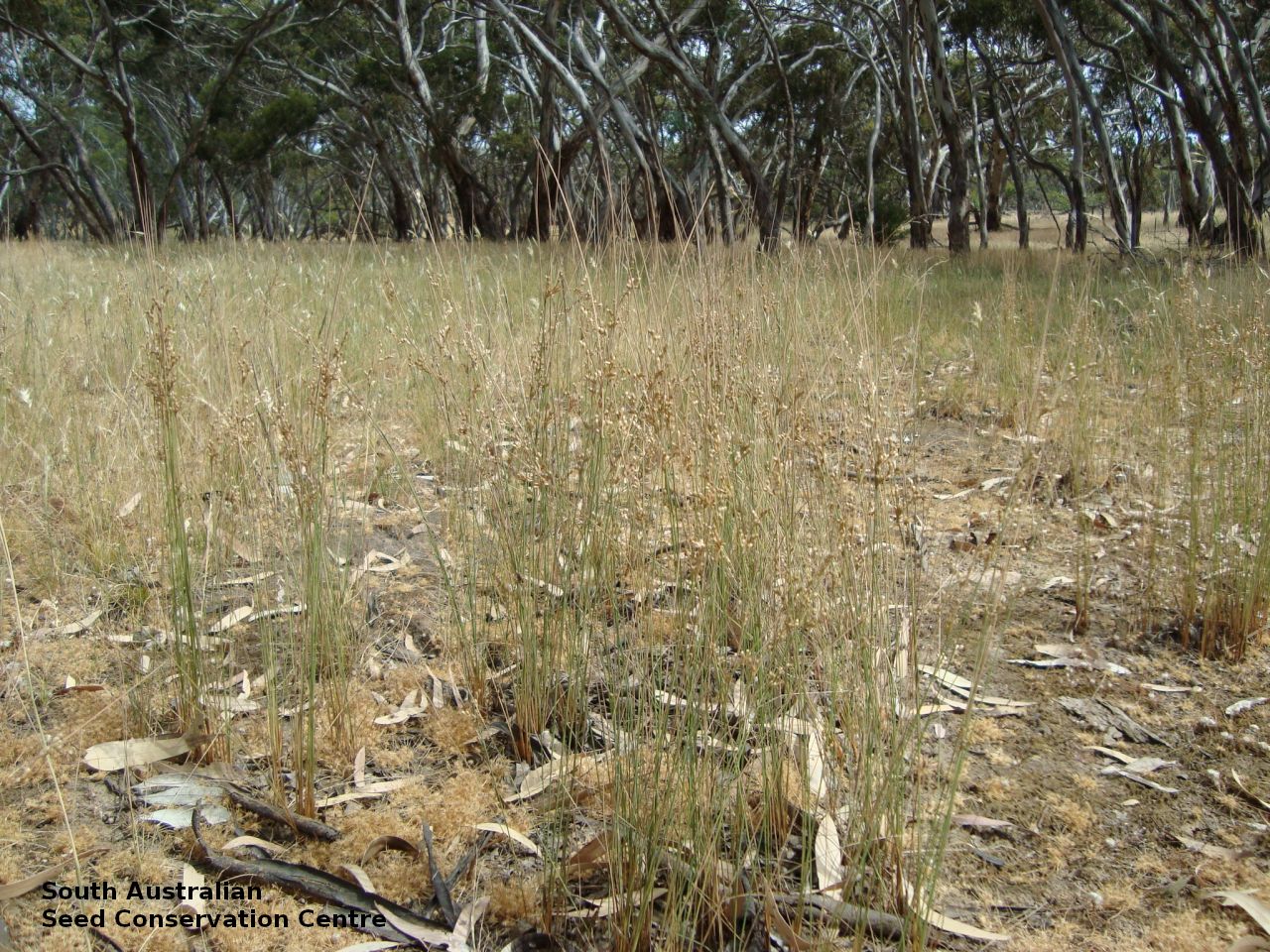
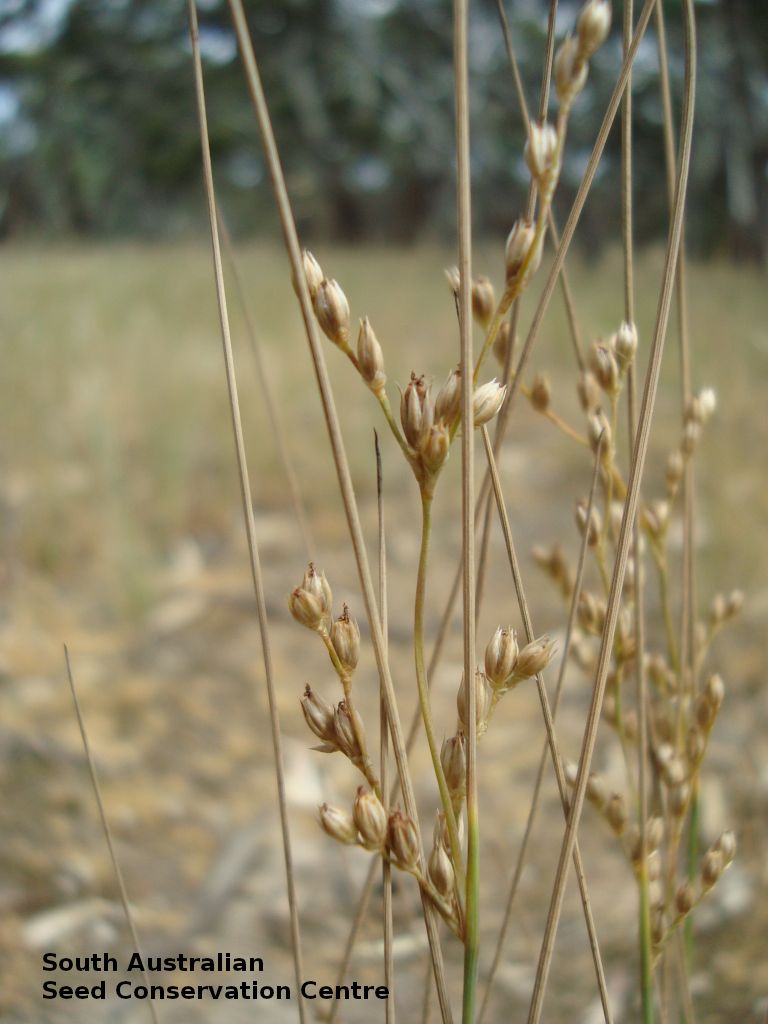
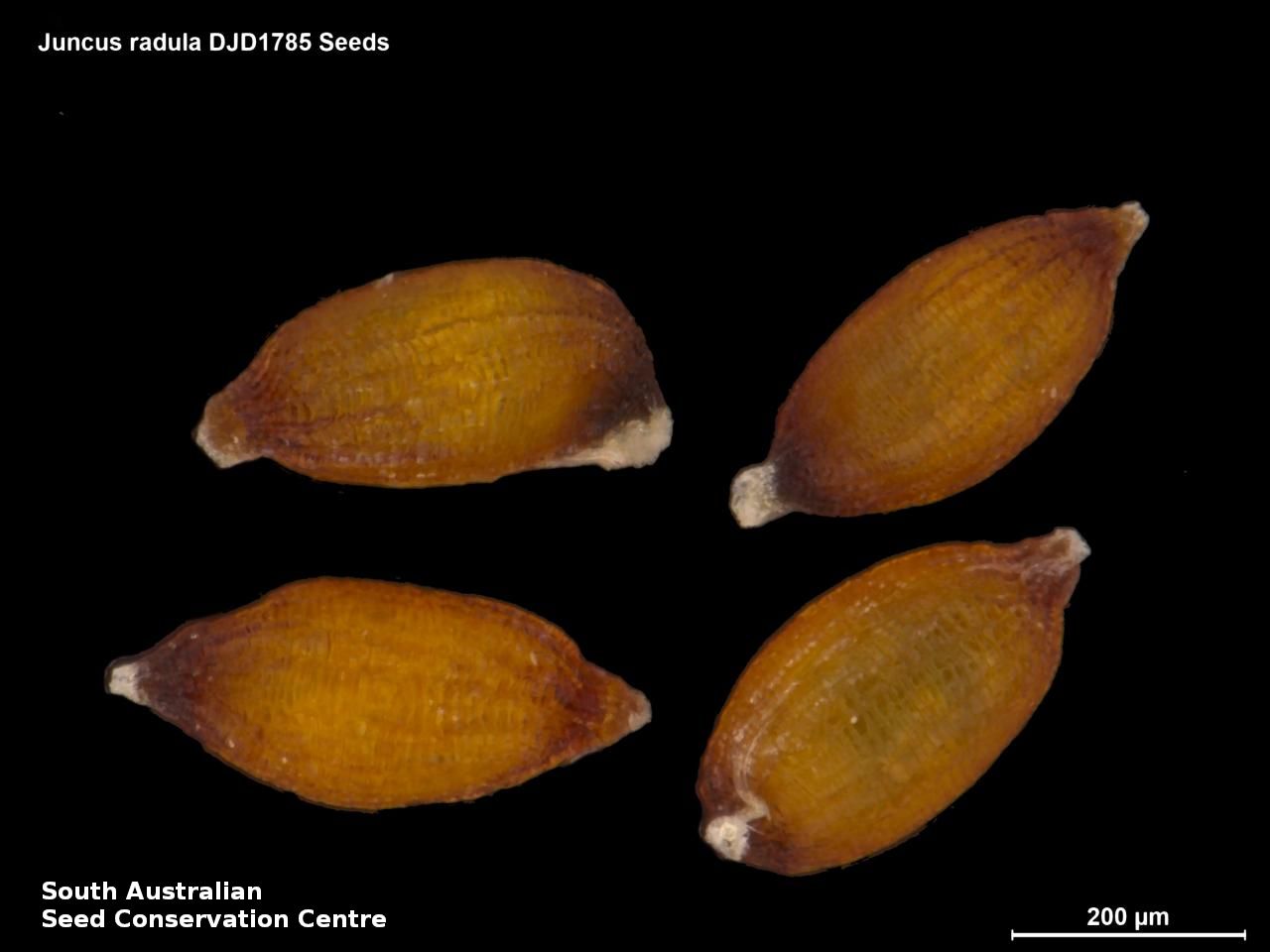
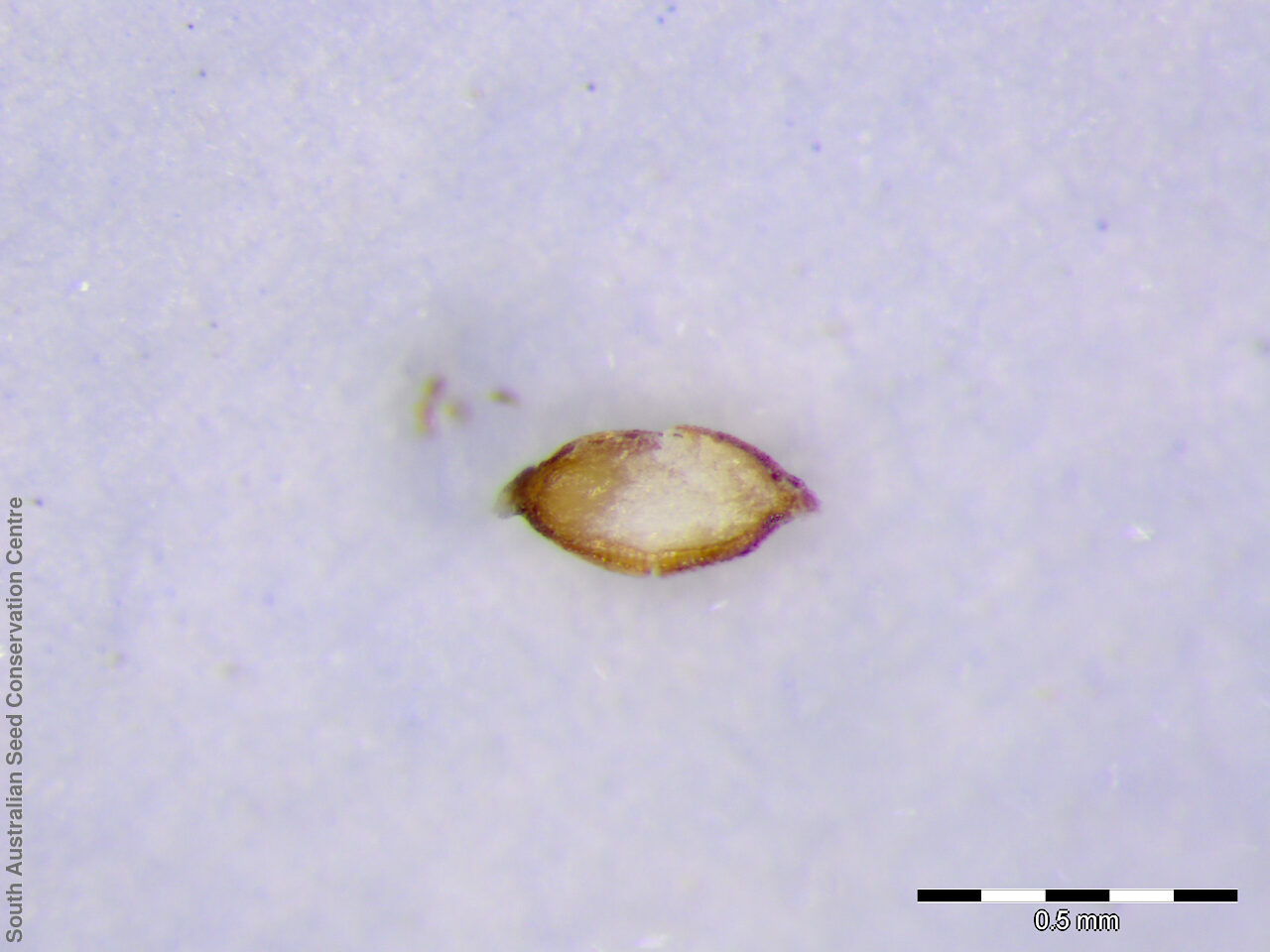

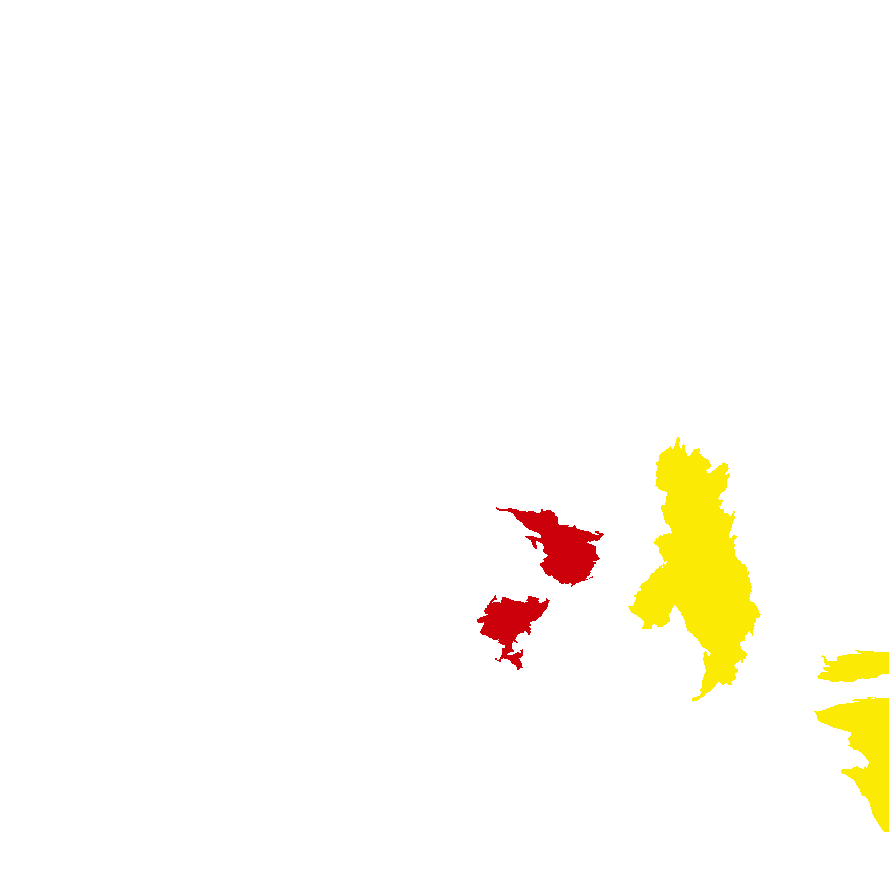
Botanical art
Etymology
Juncus from the Latin 'jungere' meaning to tie or bind; referring to the use of the rushes for weaving and basketry. Radula from the Latin 'radere' meaning to scrape; referring to its distinctly scabrous upper part of the stems, panicle branches and outside of the perianth.
Distribution and status
Found in the southern Flinders Ranges, Mount Lofty Ranges and the upper South-east, growing on seasonally damp areas in depressions and along drainage lines in woodland and open grassland. Also found in Western Australia, Queensland, New South Wales and Victoria. Native. Rare in South Australia. Rare in Queensland. Common in the other states.
Herbarium regions: Flinders Ranges, Eyre Peninsula, Northern Lofty, Yorke Peninsula, Southern Lofty, South Eastern, Green Adelaide
NRM regions: Adelaide and Mount Lofty Ranges, Eyre Peninsula, Northern and Yorke, South East
AVH map: SA distribution map (external link)
Plant description
Slender, shortly rhizomatous perennial sedge to 65 cm high, distinctly scabrous especially on the upper part of the stems, panicle branches and outside of the perianth. Culms terete, to 2.3 mm diameter, with a continuous pith; stem striations 13-28, no leaf-blade leaf-sheaths usually pale. Inflorescence lateral loose panicle to 12 cm long with straw-brown flowers evenly spaced along the panicle branches, branches scabrous, tepals often scabrous on midrib. Flowering between October and March. Fruits are clusters of golden brown ellipsoid to ovoid capsules with numerous seeds. Seeds are tiny orange ellipsoid seed to 0.5 mm long and 0.2 mm wide, with fine reticulated surface. Seed embryo type is broad.
Seed collection and propagation
Collect seeds between November and April. Collect fruits either by picking off the mature heads, those turning brown and come-off easily or break-off the whole spikes. Place the heads in a tray and leave to dry for one to two weeks. Then rub the heads with a rubber bung to dislodge the seeds. Use a sieve to separate any unwanted material. Be careful, as the seeds are very small. Seeds are brown and hard. Store the seeds with a desiccant such as dried silica beads or dry rice, in an air tight container in a cool and dry place. From two collections, the seed viability were high, at 100%.
| Location | No. of seeds (weight grams) | Number of plants | Date collected | Collection number Collection location | Date stored | % Viability | Storage temperature |
|---|---|---|---|---|---|---|---|
| MSB | 49,000 (0.49 g) | 50 | 12-Feb-2007 | RJB71398 Northern Lofty | |||
| BGA | 21,000 (0.52 g) | 50 | 12-Jan-2008 | RJB76885 Southern Lofty | 19-Sep-2008 | 100% | -18°C |
| BGA | 330,000 (7.01 g) | 50+ | 17-Dec-2009 | DJD1785 South Eastern | 1-Jun-2010 | 100% | -18°C |
| BGA | 223,200 (2.590 g) | 24-Nov-2020 | Moppa council reserve Southern Lofty | 28-Jun-2021 | 100% | -18°C, -80°C |
Number of plants: This is the number of plants from which the seeds were collected.
Collection location: The Herbarium of South Australia's region name.
% Viability: Percentage of filled healthy seeds determined by a cut test or x-ray.